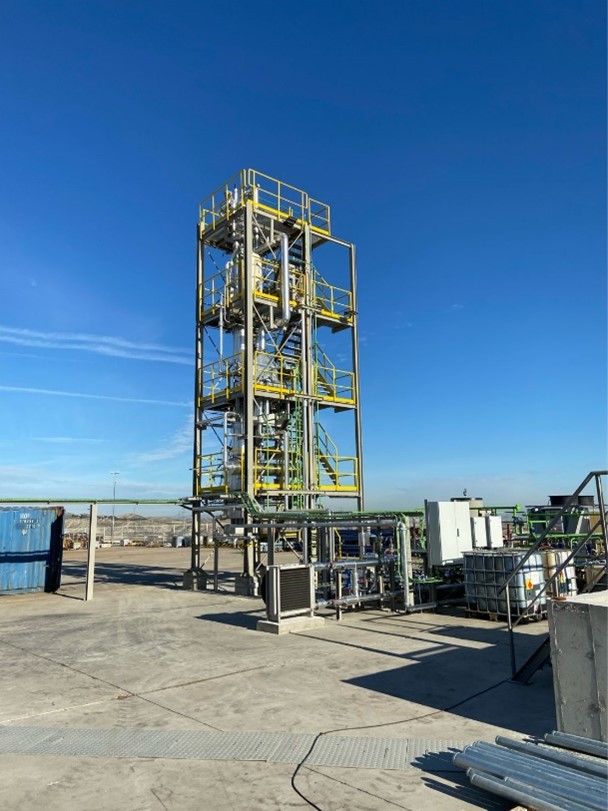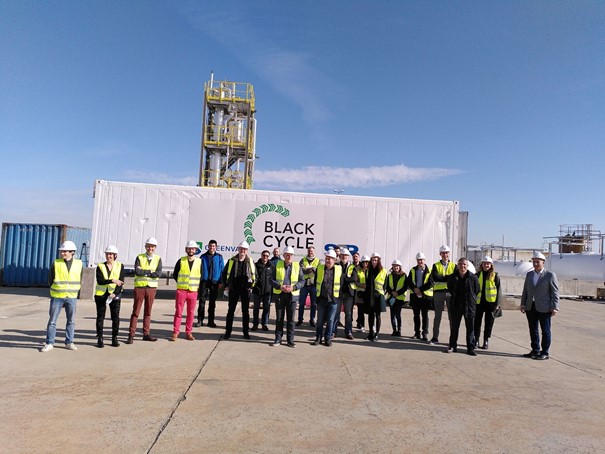An intensive program to discuss the latest results of the project and a great opportunity to visit two experimental sites of BLACKCYCLE established in Zaragoza.
Since September 2020, Michelin led the BlackCycle project to deal with an upcycling ambition, targeting the creation of a circular economy of the end-of-life tyre (ELT) into technical applications within the tyre industry by producing highly technical secondary raw materials (SRMs) from ELTs.
These SRMs will be used to develop new ranges of passenger car and truck tyres, which will be sold commercially in European and global markets.
At the beginning of March 2022, the 12 partners from 5 different countries (Orion, Ineris, Quantis, Icamcyl, Aliapur, CSIC, CPERI/CERTH, Sisener, Pyrum, Estato, Hera, and Axelera) were welcomed in Zaragoza for a technical meeting. For two days, they discussed intensively the latest results of the project.


The consortium took stock of the latest progress of the program. They brainstormed together and they had constructive discussions to move the project forward.
This meeting was a great opportunity to visit the experimental sites of the two local partners:
- The CSIC laboratories
- The SISENER plant dedicated to the awaited TRL7column.
CSIC teams are the leaders of a work package dedicated to the optimization of pyrolysis process. They work on a TRL5 pilot plant, and they can process up to ten kilograms per hour continuously. They explained how they have tested many experimental conditions trying to find the optimum ones.
CSIC teams work on different lab scale pilots. Partners have seen how they deal with the optimization of waste tyre pyrolysis, large- scale production and distillation of pyrolytic oil. The CSIC team opened the door of two special units of its laboratory and the members were pleased to discover the work in progress.

The SISENER full scale plant was then visited. At this place, the partners of BLACKCYCLE have seen how end-of-life tyres are shredded and then how they are pyrolyzed on site. Moreover, the consortium witnessed the successful launch of the TRL 7 distillation column where the pyrolysis oil is injected to be purified by heating to over 280°C. The TRL7 will consist of a distillation line of 500 kg/hr of nominal capacity.
The TRL7 will work on two independent distillations. One will consist of the distillation of the crude pyrolytic liquid produced on the pyrolysis plant (CTT). The heavy fraction (HTT) obtained in the distillation it is stored. A second distillation of the obtained light fraction (LTT) will be performed in order to obtain two different streams which their possible use will be also studied within the project context.
The column is about ten meters high and is perfectly instrumented with many temperature and pressure sensors. The entire structure is piloted semi-automatically via a platform in a container close to the column.


The two visits have allowed to highlight how the scaling up is realized within the framework of the project between small scale pilot and full-scale pilot.
The consortium was delighted to meet and share the progress of each of the partners. The Blackcycle solution is taking shape. The members of the consortium will be keen in the coming months to share their progress and show their successful results.
Moreover, the highpoint of 2022 is about to come in November with the second workshop of the project. It will be the opportunity to focus on the great advance of the consortium of the project.
